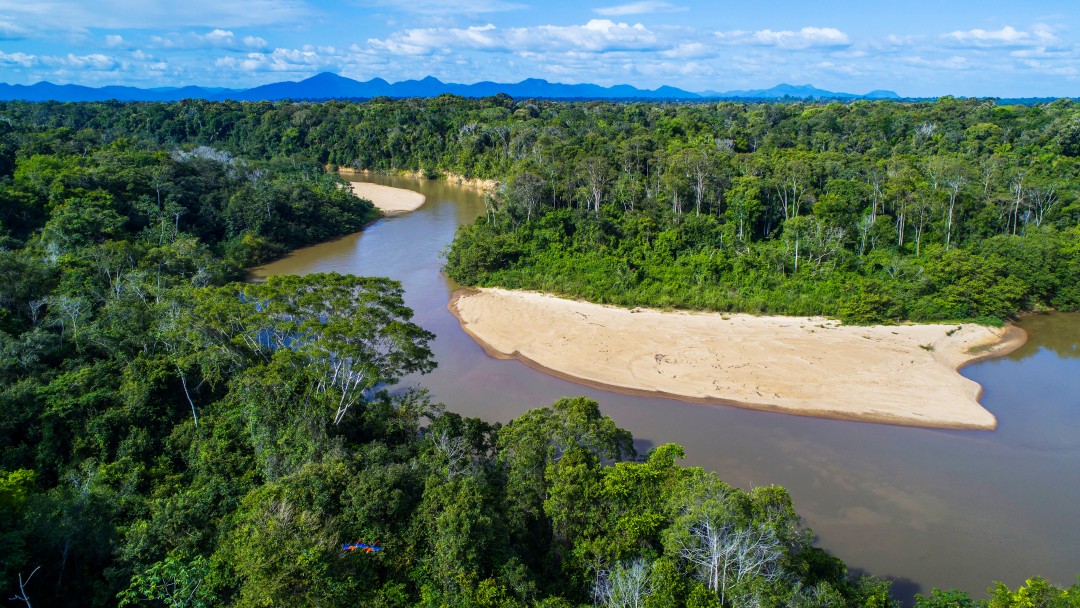As of: September 2022
Species are being lost at an unprecedented rate: more than half of all ecosystems have already been destroyed. Every year, forests the size of Portugal, about 10 million hectares, disappear. The oceans are polluted and overfished, coral reefs are already half lost. A reversal of the trend is not in sight. On the contrary: according to the World Biodiversity Council (IPBES), one in eight species is threatened with extinction, including 40% of all insects. Scientists are sounding the alarm; they are already talking about the 6th mass extinction in which we will be involved. Without massive countermeasures, this will have serious consequences for life and economic activity on Earth and also for the achievement of the Sustainable Development Goals (SDGs). Protected areas play a central role in the goal of stopping or reversing this threatening trend.
Nature conservation works; there are many examples of this. Stocks recover if they are given the space and tranquillity to do so. This is just as true on land as it is in the sea. Withdrawing certain areas from direct human access or establishing clear rules for their use is therefore an appropriate strategy to secure biodiversity that is essential for survival and to protect the climate. After all, protected areas are usually important carbon sinks. But this is only true if protected areas are well managed and are not "paper parks", i.e. they only exist on paper, but actually protect nature. It is of great importance to take internationally recognised social and environmental standards into account, so that the indigenous and local population does not have to suffer any negative consequences.
All this costs money that many parks do not have. Especially because around 80% of all species are concentrated on about 20% of the earth's surface, most of which is in developing countries. There, nature conservation often competes with other tasks, such as the fight against hunger and poverty, the development of education systems or health services. On the other hand, in Africa alone, around 370 million people live less than 10 kilometres from a protected area, and are therefore directly dependent on its ecosystem services. Financing nature reserves in developing countries sufficiently and in the long term can therefore have a lot of positive effects, not least for climate protection.

In order to address the financing bottleneck, KfW established the Legacy Landscapes Fund (LLF) in 2020 on behalf of the German Federal Government. The idea behind it is as simple as it is compelling: if it is possible to preserve as many species as possible in the biodiversity-rich but income-poor areas of this world, then a significant part of the biodiversity that is essential for survival can be secured for the entire world. That is why the LLF's goal is to support at least 30 protected areas worldwide with USD 1 million per year in the long term. This does not cover all costs, but the amount is sufficient for basic funding so that - generally speaking - "the lights don't go out" in the parks and core functions such as management and monitoring can be undertaken.
What is special about the fund is that it is not supported solely by public donors such as Germany and France (others will join shortly), but also private and philanthropic donors. The Gordon and Betty Moore Foundation, the Rob & Melani Walton Foundation, the Arcadia Foundation and The Wyss Foundation are already involved. Other private players, including renowned companies, have signalled their interest; talks are currently underway on the modalities of the collaboration. In this way at least USD 1 billion is expected to be pooled by 2030, which will be managed by the fund and distributed to qualifying protected areas. These apply for funding together with large NGOs. At present, the programme already has around USD 250 million, which has been collected in just under 1.5 years. "The LLF has developed at the speed of light," as the deputy chairman of the Supervisory Board, Dr Thomas Duve, describes what has been achieved so far. The aim is for the fund to continue to grow as quickly as possible, both financially and operationally.
So far, the LLF promotes seven pilot landscapes in Africa, Asia and Latin America with an area of more than 60,000 square kilometres; this corresponds to about three quarters of Austria. In this way, it benefits both biodiversity and the climate, because such areas are natural CO2 sinks. The first six landscapes alone can absorb an estimated 7.4 million tonnes of CO2 equivalents per year. For comparison: that is about half as much as the entire CO2 emissions of Cambodia or 5% of the annual emissions from the transport sector in Germany. But that was only the beginning. In the meantime, a public tender has taken place; the selection process is still ongoing. But it looks like at least seven more conservation areas could come into LLF funding by mid-2023. How many there will be in the end depends crucially on the extent to which other donors join and contribute funds to the LLF. But one thing is already clear: with this innovative approach of partnerships on many levels, the LLF is reaching a new dimension in nature conservation.
The project contributes to the achievement of these following United Nations Sustainable Development Goals:
KfW Group
KfW Development Bank
+49 69 7431-2632
+49 69 7431-4187
Share page
To share the content of this page with your network, click on one of the icons below.
Note on data protection: When you share content, your personal data is transferred to the selected network.
Data protection
Alternatively, you can also copy the short link: https://www.kfw-entwicklungsbank.de/s/enzBYyNA
Copy link Link copied